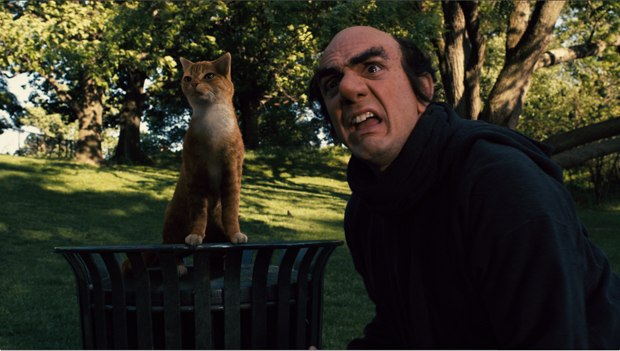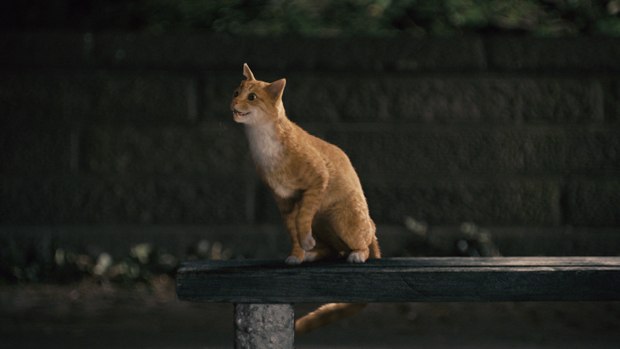Tippett Studio brought their expertise to Columbia Pictures' THE SMURFS. Scott Liedtka, the co-visual effects supervisor, answers some questions about their work.
Tippett Studio brought their expertise to Columbia Pictures' THE SMURFS. Scott Liedtka, the co-visual effects supervisor, answers some questions about their work.
How many sequences did you work on? What were the key sequences?
101 shots, plus 10 still frames for the end credit roll, 17 sequences. The key sequences are when Azrael gives a performance - in Gargamel's castle, throwing up a hair ball while with Gargamel on the park bench, with Gargamel at the fancy lunch - and when Azrael is giving chase to Smurfette and the rest of the Smurfs - in the park when they first arrive in New York, in the FAO Schwarz toy store and in the Belvedere Castle when Smurfette is trying to free Papa Smurf from the evil machine that Gargamel has devised.
What was the most challenging aspect of the work?
The most challenging aspect of the work was finding the character of Azrael. As is common with a show where a live cat performance is mixed with face replacement shots and shots with a full CG cat, finding the balance in a CG shot between a more cartoony performance that is really funny and a more realistic performance that will cut with the live cat in other shots takes time and that balance often changes over the course of the show. We have been in this situation before, so we can offer a lot of help to the filmaking team as they find the balance that works for them.
How did you accomplish the work?
For Tippett Studio, this was a show that was a great fit with our pipeline. We are quite comfortable creating a CG character to match a live action animal, animating it for maximum performance value, then lighting it and integrating it into a live action plate. Our standard production pipeline works really well to ensure the work looks great and gives the filmakers the ability to efficiently direct the work. The twist in this case was the fact that more than half of our shots had elements from both Tippett Studio (Azrael) and Sony Pictures Imageworks (Smurfs) which required a lot of communication and data sharing to keep things moving forward smoothly.
What tools were used?
Tippett Studio mainly uses a Maya, Nuke, Renderman pipeline. We also use Mudbox, Shallowpaint (an internal 3D paint tool) and Photoshop, Jet (an internal job control tool) and Houdini.
What advances, if any, did you achieve on the project?
We made many incremental advances on this show. We shifted off of Shake onto Nuke for compositing. We beefed up our tools for using image based lighting. We reworked our cat asset and made significant improvements to the animation rig. Prepping for stereo went very smoothly.
What specific expertise did you bring to the project?
Tippett Studio has a rock solid crew and a production process that delivers great looking shots. I think the area that we really excel at is in getting the character animation right. Our animation supervisor got the trust of the director early in the project and and was given a lot of free reign to find funny performances. We had to go for realistic animation in a lot of shots, which is hard enough, but in other shots we pulled out the stops to get the laugh. Even though our Azrael did not have any lines, he had to carry his part and fit in opposite Gargamel. It was a lot of fun bringing him to the screen.










